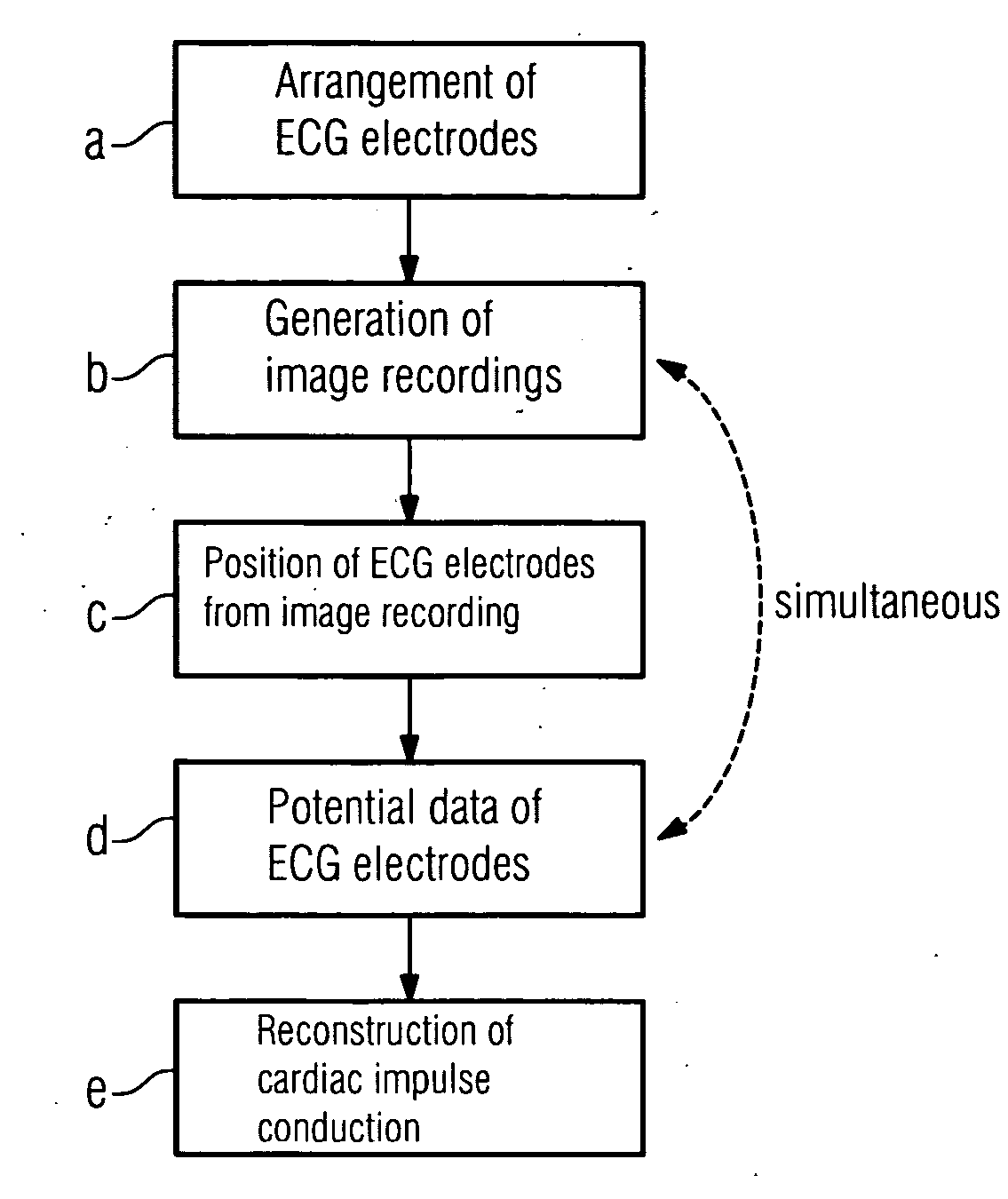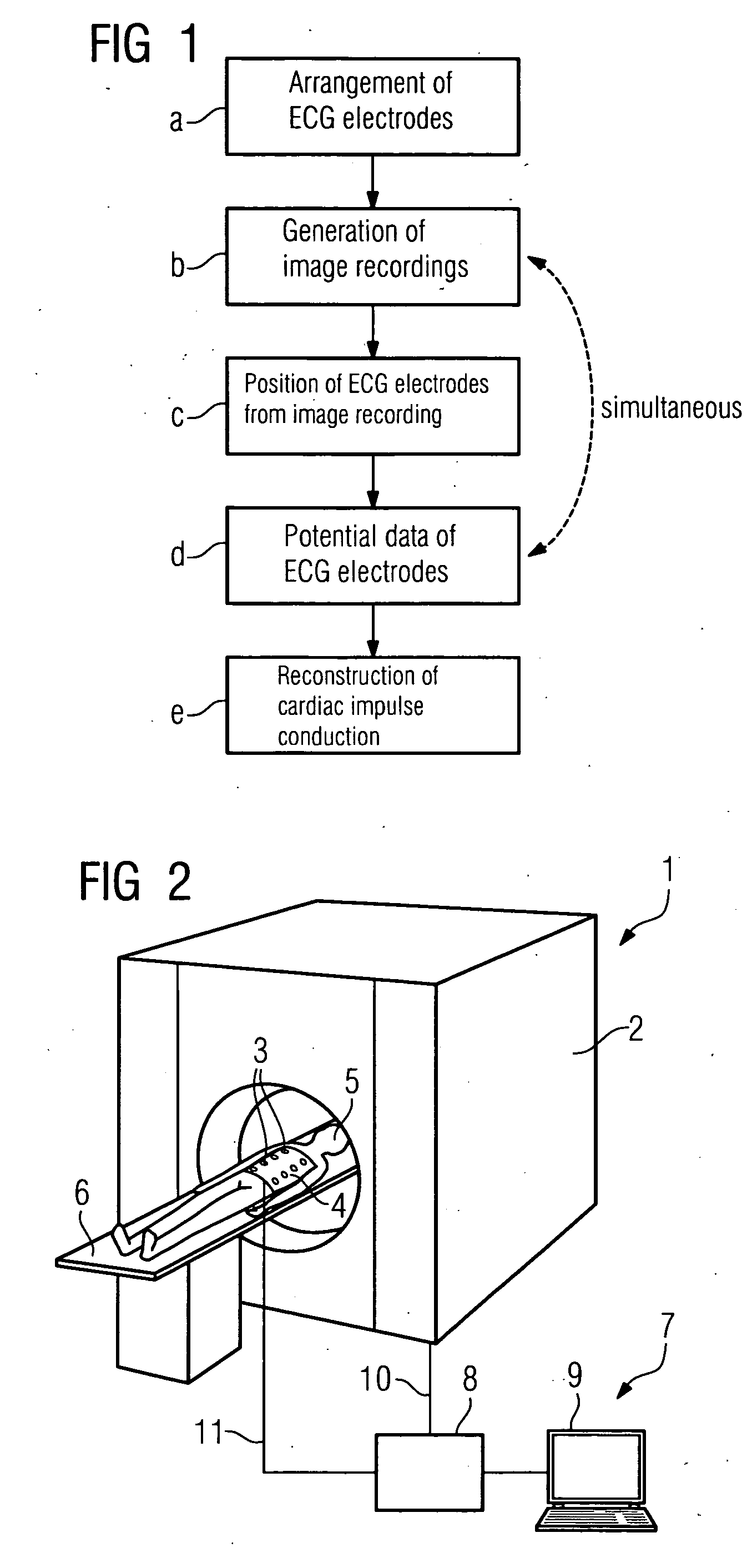Method for determining cardiac impulse conduction and associated medical device
a technology of cardiac impulse and cardiac impulse, applied in the field of cardiac impulse conduction determination, can solve the problems of difficult reconstruction of such a vector cardiogram, difficult diagnosis, and limited assessment of cardiac impulse conduction, and achieve the effects of improving the identification of individual electrodes, and reducing the difficulty of diagnostic errors
- Summary
- Abstract
- Description
- Claims
- Application Information
AI Technical Summary
Benefits of technology
Problems solved by technology
Method used
Image
Examples
Embodiment Construction
[0066]FIG. 1 represents a flow diagram of a method according to the invention comprising steps a-e. Firstly, in step a, the ECG electrodes for recording the electric potentials are arranged on the upper body of the patient. Then, in accordance with step b, at least one image recording or even a film of image recordings of at least one area of the body of the patient, advantageously of the area in which the ECG electrodes are arranged, is generated. This may, for example, be carried out by means of a magnetic resonance tomograph or by means of another imaging device which records e.g. the thorax of the patient.
[0067]The positions of the ECG electrodes are, in accordance with step c, determined directly from the image recording. Consequently, not only is the anatomy, i.e. the shape of the heart and of the thorax of the patient, derived from the image recording, but the position of the electrodes is also determined therefrom.
[0068]In step d, a recording of potential data of the ECG ele...
PUM
 Login to View More
Login to View More Abstract
Description
Claims
Application Information
 Login to View More
Login to View More - R&D
- Intellectual Property
- Life Sciences
- Materials
- Tech Scout
- Unparalleled Data Quality
- Higher Quality Content
- 60% Fewer Hallucinations
Browse by: Latest US Patents, China's latest patents, Technical Efficacy Thesaurus, Application Domain, Technology Topic, Popular Technical Reports.
© 2025 PatSnap. All rights reserved.Legal|Privacy policy|Modern Slavery Act Transparency Statement|Sitemap|About US| Contact US: help@patsnap.com



